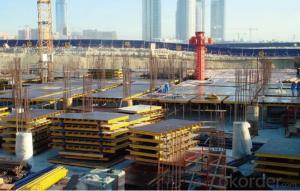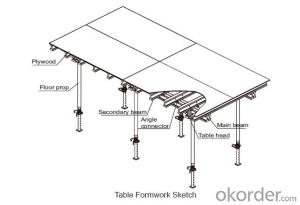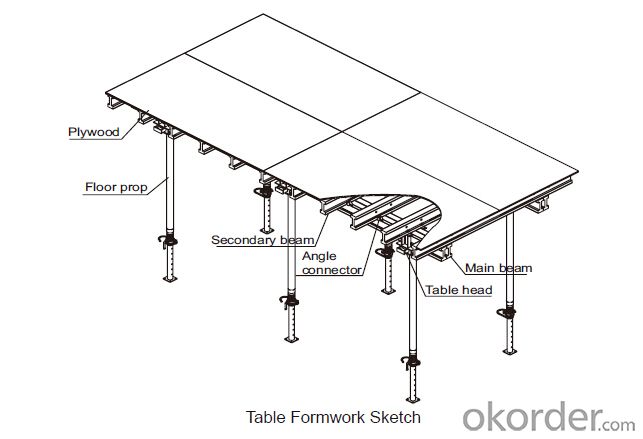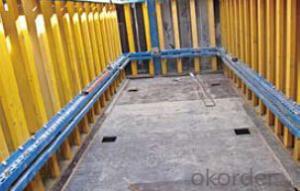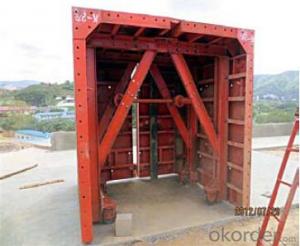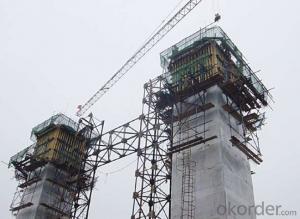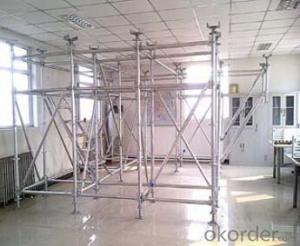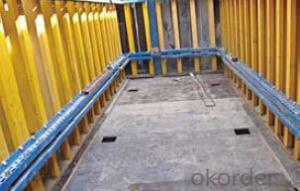Tabel Formwork system for Formwork and Scaffolding Build
- Loading Port:
- Tianjin
- Payment Terms:
- TT OR LC
- Min Order Qty:
- 50 m²
- Supply Capability:
- 1000 m²/month
OKorder Service Pledge
OKorder Financial Service
You Might Also Like
Tabel Formwork:
Table formwork is the most typical application for slab, with timber beam, the slab formwork is
light weight, fast and economic in the construction.
Characteristics:
◆ Simple structure, easy assembly.
◆ Flexible structure, be adapted to different support system.
◆ High construction efficiency with special system tools.
1. Lifting fork for lifting the table formwork to upper floor.
2. Trolley for moving the table formwork on floor.
◆ Flexible application with stand alone props.
◆ Safer condition with handrails.
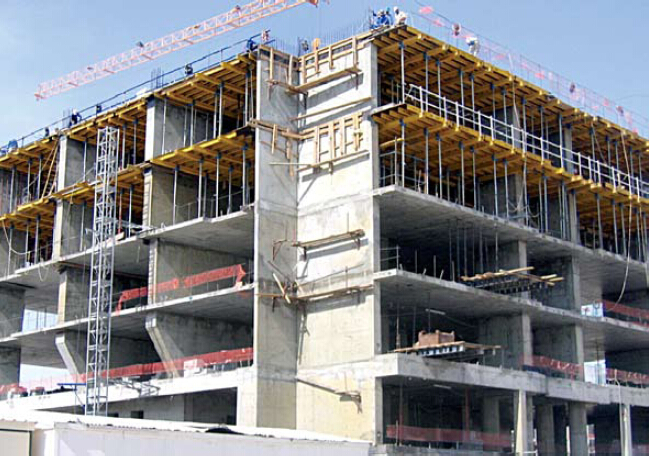
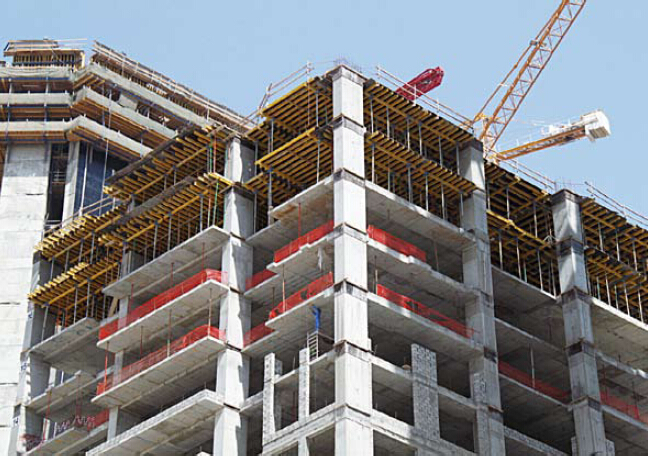
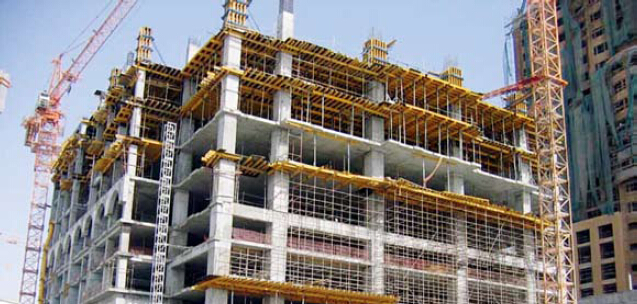
- Q: What are the typical safety precautions when working with steel formwork?
- When working with steel formwork, some typical safety precautions include wearing appropriate personal protective equipment (PPE) such as gloves, safety glasses, and steel-toed boots to protect against potential hazards. Additionally, workers should receive proper training on the proper handling and installation techniques of steel formwork systems. It is essential to ensure that the formwork is securely supported and adequately braced to prevent collapse or accidents. Regular inspection of the formwork for any damages or defects is also crucial to maintain a safe working environment.
- Q: How does steel formwork impact the overall project management?
- Steel formwork can have a significant impact on the overall project management. Firstly, steel formwork is known for its durability, strength, and reusability, which allows for multiple uses on different projects. This reduces the need for frequent replacements or repairs, saving both time and money. Additionally, steel formwork offers greater accuracy and precision in construction, resulting in a higher quality end product. It also enables faster construction due to its ease of assembly and disassembly. Moreover, steel formwork provides a safer working environment for laborers, as it is sturdier and more resistant to deformation. Overall, steel formwork positively impacts project management by enhancing efficiency, reducing costs, improving construction quality, and ensuring worker safety.
- Q: Can steel formwork be used for dam construction projects?
- Yes, steel formwork can be used for dam construction projects. Steel formwork offers several advantages such as high strength, durability, and the ability to withstand the weight and pressure of concrete. It provides a stable and secure framework for pouring and shaping the concrete structure of the dam. Additionally, steel formwork can be reused multiple times, making it cost-effective for large-scale projects like dam construction.
- Q: How does steel formwork ensure accurate concrete dimensions and alignment?
- Steel formwork ensures accurate concrete dimensions and alignment by providing a rigid and stable structure that holds the concrete in place during the pouring and curing process. The steel formwork is designed and fabricated to precise specifications, allowing for precise shaping and positioning of the concrete. The use of steel formwork also reduces the risk of deformation or shifting during the concrete setting, ensuring that the final dimensions and alignment of the concrete structure are maintained.
- Q: How does steel formwork contribute to the overall moisture resistance of the structure?
- Steel formwork contributes to the overall moisture resistance of a structure by providing a strong and durable barrier against water penetration. Unlike traditional wooden formwork, steel formwork does not absorb or retain moisture, reducing the risk of water damage and mold growth. The tight joints and smooth surface of steel formwork also prevent water from seeping into the structure, ensuring its long-term integrity and reducing maintenance costs.
- Q: How does steel formwork impact the overall construction productivity?
- The numerous advantages of steel formwork make it significantly impact overall construction productivity. Firstly, steel formwork is highly durable, allowing for multiple uses and cost-effectiveness in construction projects. Unlike timber formwork, it does not warp or shrink, ensuring consistent dimensions and reducing the need for frequent repairs or replacements. This durability eliminates the delay caused by formwork maintenance or replacement, saving time and money. Additionally, steel formwork offers superior strength and stability, enabling the construction of larger and more complex structures. Its rigid nature ensures it can support heavy concrete loads without deformation or collapse. This not only enhances construction site safety but also speeds up the pouring of concrete and reduces the need for additional support structures, facilitating the construction process. Moreover, steel formwork is highly versatile and easily customizable to meet specific project requirements. It can be easily assembled, disassembled, and repositioned, making it efficient in various construction phases. This flexibility saves time and effort by eliminating the constant construction of new formwork for different parts of the structure. Reusing steel formwork also reduces material waste, further improving productivity. Furthermore, steel formwork provides better surface finishes compared to other systems. Its smooth and rigid surface ensures high-quality finishes, reducing the need for additional finishing work such as plastering or leveling. This saves time and improves overall construction productivity. In conclusion, steel formwork enhances construction productivity through its durability, strength, stability, versatility, and high-quality finishes. Its long-lasting nature, ease of use, and ability to withstand heavy concrete loads contribute to reduced downtime and increased efficiency on construction sites. Steel formwork is essential for enhancing construction productivity.
- Q: How does steel formwork handle moisture and humidity?
- Steel formwork is highly resistant to moisture and humidity due to its non-porous nature. Unlike other materials, steel does not absorb water, preventing any damage caused by swelling, warping, or decay. Additionally, steel formwork is coated with protective layers, such as galvanization or epoxy, which further enhance its resistance to moisture and humidity, ensuring its durability and longevity.
- Q: What are the different types of form release agents used with steel formwork?
- There are several types of form release agents used with steel formwork, including petroleum-based, water-based, and emulsion release agents. Petroleum-based release agents are commonly used and provide good release properties, but they may have environmental concerns. Water-based release agents are environmentally friendly and provide a good release, but they may require additional drying time. Emulsion release agents are a combination of oil and water and offer a balance between petroleum-based and water-based agents. The choice of form release agent depends on factors such as the desired release properties, environmental considerations, and specific project requirements.
- Q: What are the common cost implications of using steel formwork in a construction project?
- The common cost implications of using steel formwork in a construction project include higher initial costs compared to other formwork materials, such as wood or plastic. However, steel formwork offers durability and can be reused multiple times, reducing the overall cost of formwork over the long term. Additionally, steel formwork provides better quality and accuracy in concrete finishing, saving costs on rework or repairs.
- Q: What are the common types of form ties used with steel formwork?
- There are several common types of form ties used with steel formwork. These ties are essential for holding the formwork together and ensuring the stability and strength of the concrete structure. 1. Snap Ties: Snap ties are the most common type of form ties used in steel formwork. They consist of a metal rod with cones or flat disks on each end. The ties are inserted through holes in the formwork panels and secured in place by a wedge or a pin. Snap ties are easy to install and remove, making them a popular choice for formwork construction. 2. Flat Ties: Flat ties are similar to snap ties but have a flat plate on one end instead of a cone. The flat plate provides a larger surface area for load distribution, making these ties suitable for heavy-duty applications. Flat ties are commonly used in large-scale construction projects where high strength and stability are required. 3. Waler Ties: Waler ties are used to connect the formwork panels to walers, which are horizontal beams that support the formwork. These ties are typically made of steel bars or rods and are secured to the formwork panels by bolts or clamps. Waler ties help distribute the load evenly across the formwork system and provide additional support and stability. 4. Coil Ties: Coil ties are flexible ties made of wire coils. They are used to secure two opposite formwork panels together. The coil ties are inserted into the formwork panels and twisted at both ends to secure them in place. Coil ties are cost-effective and easy to use, making them a popular choice for small-scale construction projects. 5. Cone Ties: Cone ties are similar to snap ties but have a cone-shaped end on one side. The cone-shaped end allows for easy insertion and removal of the tie. Cone ties are typically used in situations where frequent formwork assembly and disassembly is required, such as in the construction of temporary structures or formwork systems used in precast concrete production. These are some of the common types of form ties used with steel formwork. The choice of tie depends on factors such as the size and complexity of the project, the required strength and stability, and the ease of installation and removal. It is important to select the appropriate form ties to ensure the safety and efficiency of the formwork system.
Send your message to us
Tabel Formwork system for Formwork and Scaffolding Build
- Loading Port:
- Tianjin
- Payment Terms:
- TT OR LC
- Min Order Qty:
- 50 m²
- Supply Capability:
- 1000 m²/month
OKorder Service Pledge
OKorder Financial Service
Similar products
Hot products
Hot Searches
